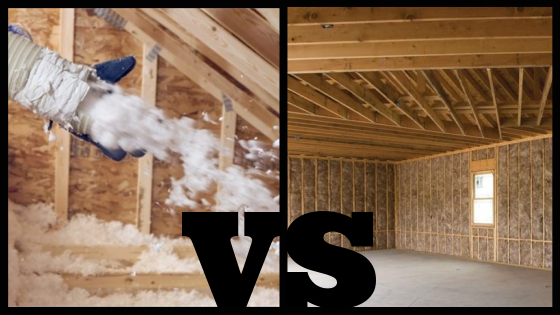Most homeowners don’t think much about insulating the home. That is, until the temperatures turn extremely cold or hot. Then, it becomes glaringly clear how deficient the insulation may be when family members begin shivering or sweating profusely.
There are many different types of insulation but two of the most common are blown-in and batt. Looking at the pros and cons can help narrow down your choice.
Batt insulation is comprised of fiberglass and stored in large blankets or rolls. Blown-in insulation is loose-fill—it can be made of various types of recycled materials, such as fiberglass or cellulose. Blown-in is exactly that—blown into an attic with a special machine. Still, there are several pros and cons between the two types of insulation.
BLOWN-IN
- This type of insulation is more eco-friendly since it’s composed of mostly recycled materials—the cellulose is frequently made from recycled newspaper; the fiberglass is typically glass or mineral wool.
- Furthermore, this type of loose material is perfect for hard-to-reach areas, such as corners and small spaces.
- The cellulose material in blown-in insulation is a fire retardant, so if a fire occurs, it won’t catch fire or spread.
- If the blown-in has a big percentage of fiberglass, it may retain water over time and eventually lead to mold issues.
- If treated with borate to prevent pests, the chemical treatment reduces blown-in’s eco-friendly ranking.
- Blown-in is more expensive than other insulation since the product can only be installed by professionals.
BATT
- This type of insulation may be installed almost anywhere in the home, including floors, walls, and attics.
- Readily available without a long order time.
- Quite inexpensive to install and the most affordable insulation choice.
- Comes pre-cut; therefore, it may be challenging to install in oddly shaped areas with proper coverage.
- Requires multiple layers to attain the appropriate level of insulation.
- Batt is also more susceptible to moisture because of the fiberglass content.
Before you decide, you must also determine the recommended R-values for the area you are insulating. The higher the R-value, the greater the effectiveness of the insulation material. The R-value of the insulation depends on the thickness and density. Temperature, age, and moisture accumulation further influence R-values.
Phoenix Siding is experienced and knowledgeable in placing insulation. Our customers trust our work and know we can help create a comfortable home miracle.
Now that you understand the differences between blown-in and batt insulation, you can make the best choice for your budget and your home. No doubt about it, since the weather is incredibly unpredictable, feeling secure about the comfort inside your home is a good achievement in 2020 and beyond.
Article written by Tara Panrucker



